
Features
- Record times to 1/10,000 second accuracy from a variety of external inputs.
- photocells/beams, start wands, plungers, pressure tapes, etc
- Weatherproof keypad for manual entry of bib sequences
- incl posted bibs, order-of-finish sequence entry, and biathlon range / shooting data
- Integrates seamlessly with the Zone4 Timing Software
More about the Zone4 timing software - Long range wireless communication over 900mhz radio to Zone4 ServerBox
More about the Zone4 Serverbox
Specifications
- 1/10,000 (0.0001) accuracy
- All Day battery life using AA Lithium rechargeable batteries
- external serial printer compatible (FIS req 2023)
- FIS homologated to 2037
- internal memory holds thousands of times
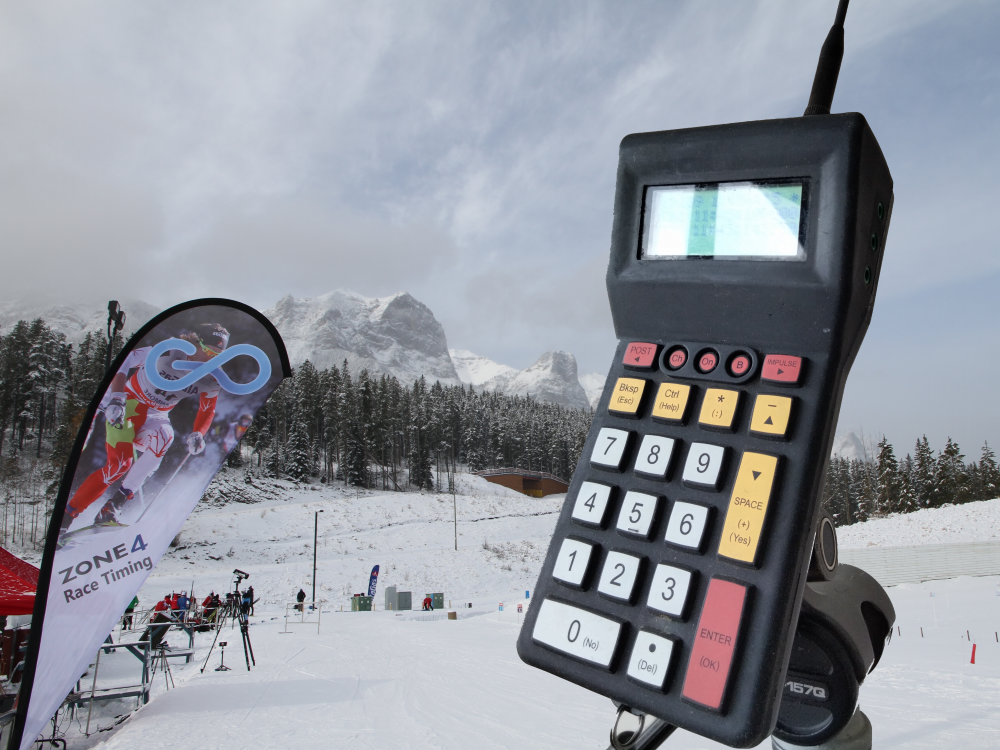
Purchase Wireless SRT2000
$2285 USD $2970 CAD
Upgrade SRT1000 to SRT2000
$755 USD $980 CAD
Upgrade SRT500 to SRT2000
$955 USD $1240 CAD
How Upgrade works
Zone4 worked with Summit Systems in Salt Lake City to design and certify the SRT2000 Timer as an upgradable series of components that can be installed in existing SRT Timers. This requires a new CPU, clock, and other components and this work must be performed at Zone4 Canmore headquarters by specially trained technicians. Once the new components and firmware are installed, tuning of the new clocks must be performed over several days to ensure the units pass FIS's strict PPM drift specifications. Overall, the upgrade process should be expected to take about 1 month after the units arrive at Zone4 headquarters. Zone4 currently has a small stock of upgrade kits and will have wide availability in fall of 2022. Please contact us to book your Summits in for upgrades or repair.
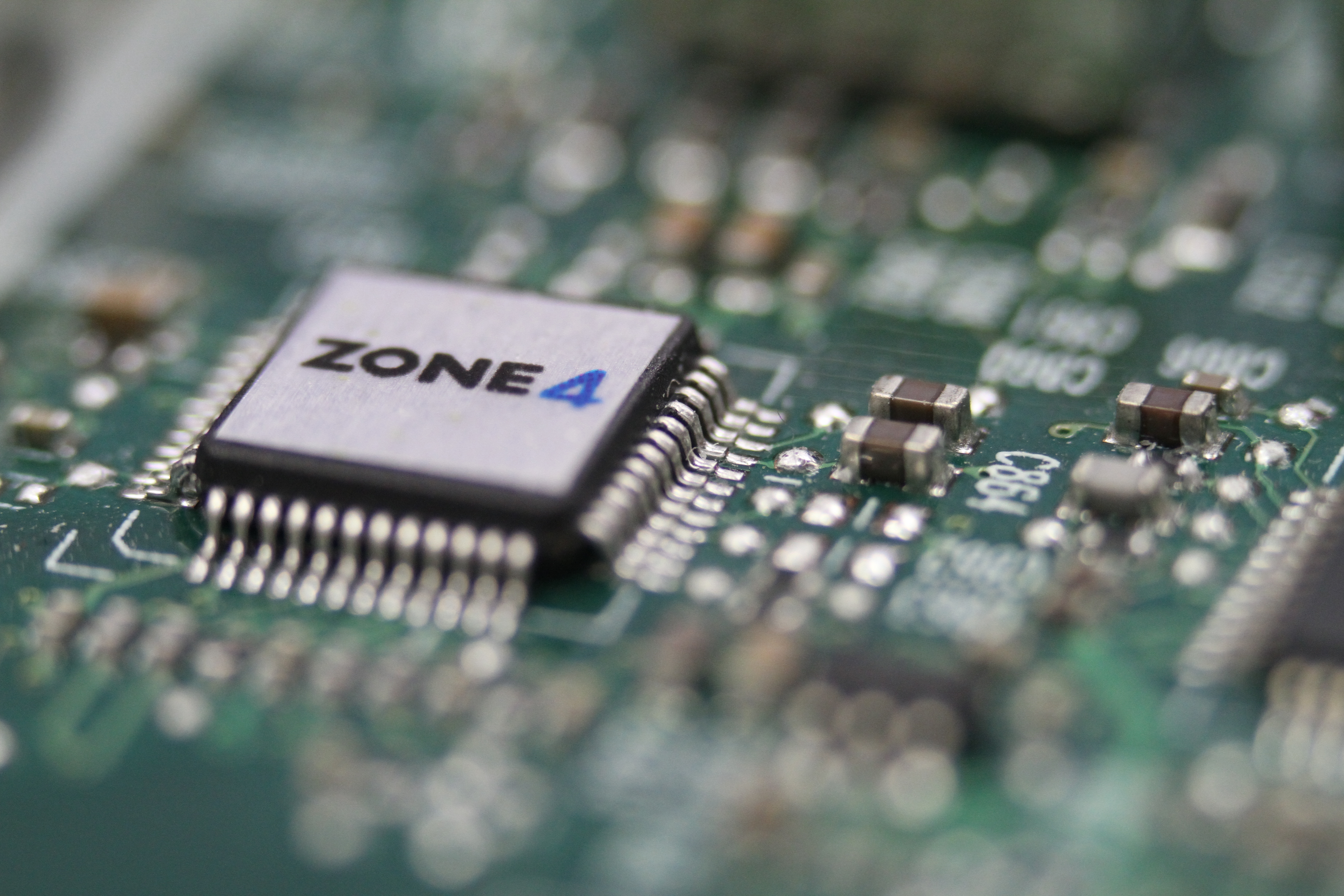
How many SRT2000 Timers do I need for FIS races
FIS rules taking effect for the 2022-2023 cross country season detail two approaches to timer setup. For FIS level 0 (Olympics/World Cup) you must run two sets of wires all the way from the start to the finish (or from both start and finish into the timing building) and connect these wires to 2 Summit SRT2000 Timers. One would be the A timer connected to the A port at the start and A photocell at the finish, and the other Summit would be the B timer connected to the B port on the start gate and B photocell. The problem with this approach is running wires is time consuming, and risks a mid-race breakage. This approach also prevents you from doing Post-Plunge workflow at the start as the primary A summit that you would post on is not at the start in this scenario. Below is the FIS wiring diagram for Level 0 Individual Start events.
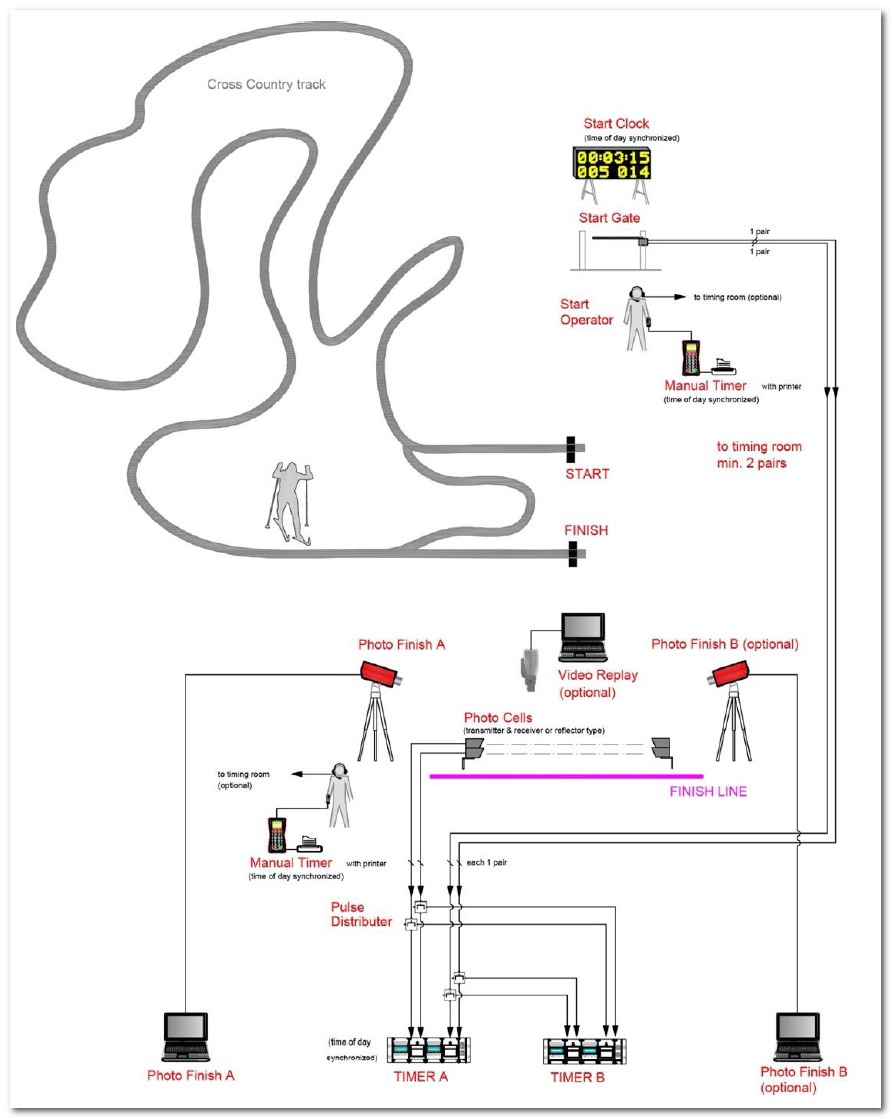
Level 1-4 races (Nationals, SuperTour, Continental Cup) FIS allows you to have 2 wireless SRT2000 Timers at the start (one plugged into the A port and the other plugged into the B port on the start wand.) You then would have 2 SRT2000 timers at the finish, one plugged into the A photocell, and the other into the B photocell. This approach is how clubs in North America have operated for over a decade and it eliminates the time and risk of wires and allows standard post+plunge of bibs at the start. Therefor for races in North America, Zone4 recommends clubs continue to deploy 4 wireless SRT2000 timer to meet FIS requirements. Additional timers for backup plunging can be SRT1000 or SRT500. Below is the FIS diagram for Level 1-4 Individual Start races using Wireless SRT2000 timers along with backup Summits.
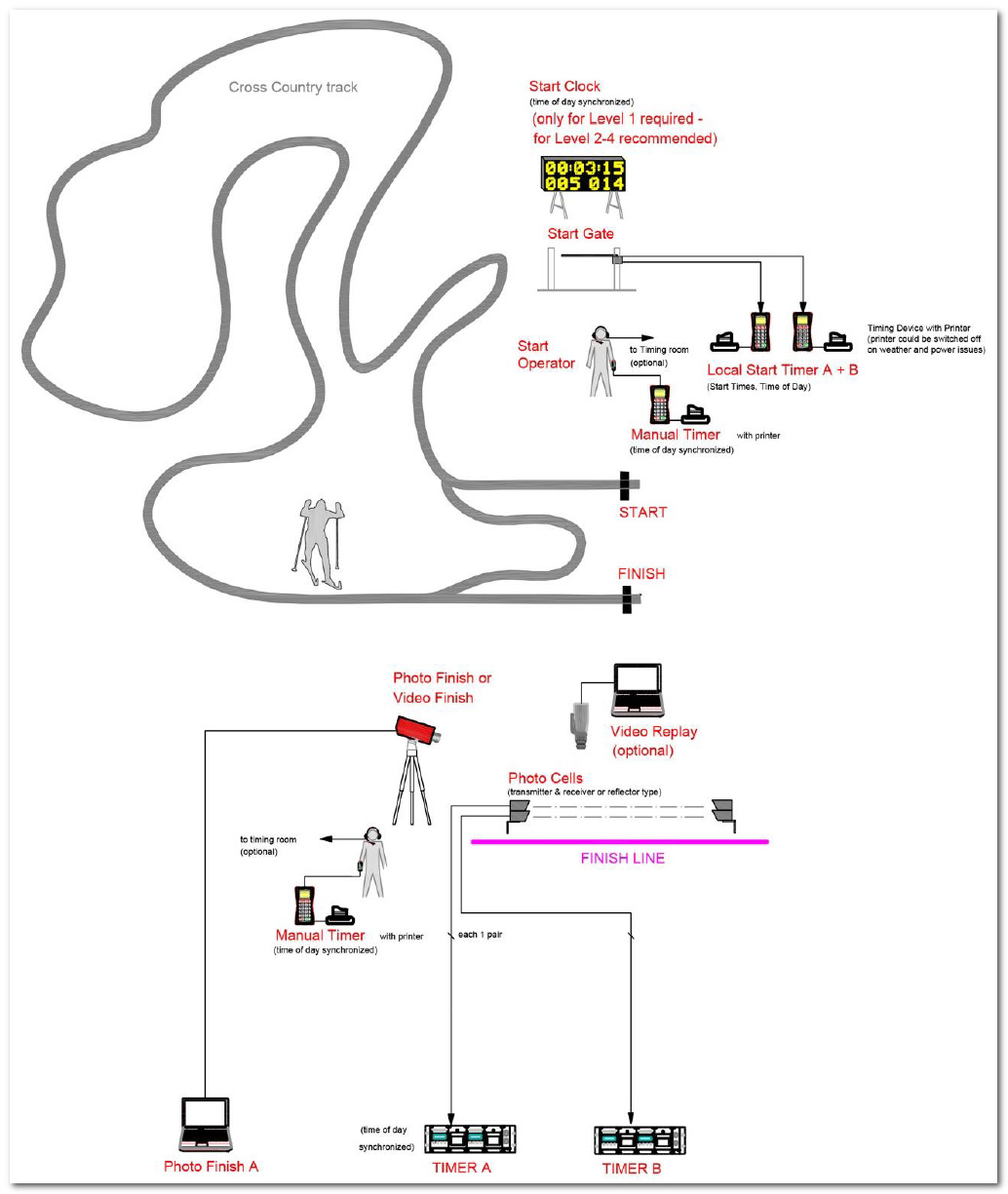
Timer Synchronization
At FIS races, it is required that all timing devices be precisely synchronized so they have the exact same running time of day. Historically, for wireless Summit Timers, the synchronization was achieved wirelessly via the ServerBox sync function. But wireless synchronization (which can be a few 1/1000 apart due to radio messaging) is not accurate enough now that FIS requires the higher 1/10,000 second precision in the SRT2000. FIS also requires synchronization of all other timing devices to the same time base and previously there was a slight difference between the GPS time on the GoChip activators compared to the Summit time that came via syncing the NTP time on the ServerBox. To solve this synchronization challenge, Zone4 developed a special version of our GoChip Activator that utilizes the GPS signal to syncronize Summits and other devices. This standardizes all devices on-site to the GPS time of the GoChip activators and allows high precision resynchronization if necessary. See here for more details and our pricing page for rental, upgrade and purchase pricing.
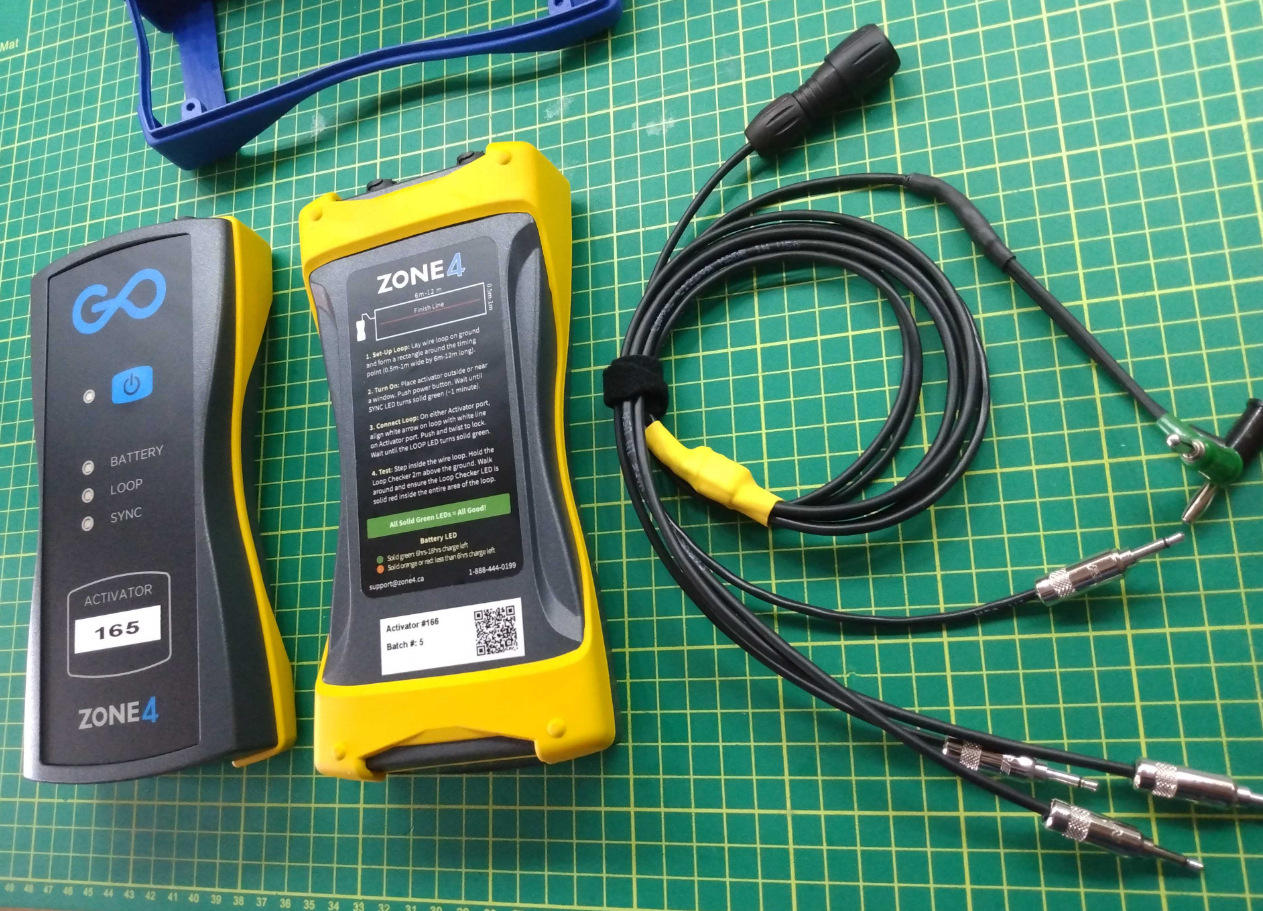
Repairs and Service?
Zone4 is also developing the ability to repair and service existing summits. Issues that may require repairs include: worn out keypad buttons, damaged input jacks from falls, broken screens from over-pressure/falls, broken battery clips. If sending in units for SRT2000 upgrades, other service may be booked at the same time.
Can we still purchase SRT1000 or SRT500 timers?
Yes, Zone4 is in the process of manufacturing stock of SRT1000 and SRT500 timers as they are still useful as backup devices at FIS races and as primary devices at domestic level non-FIS races. See our pricing page for more details.
What about other Summit hardware such as plungers, modems, etc.
In taking over distribution of Summit hardware, Zone4's initial focus is upgrading existing summits to SRT2000 to meet FIS homologation rules. This is the focus right now in lead up to the winter season. Our next focus is manufacturing new stock of timers. We intend to distribute other components but all of this will take time to acquire and stock. Please reach out to us if there are critical components that you need early this winter.
External Thermal Printers
FIS homologation states that the Summit SRT2000 timer must be used ‘with external printer’ so in order to be FIS compliant, each of the 4 timers will need to be paired with a thermal printer which will have to reside in a case at each Summit location. Zone4 has spent several months testing various products and has settled on low cost model pictured below. See here for more details and our pricing page for rental, and purchase pricing.
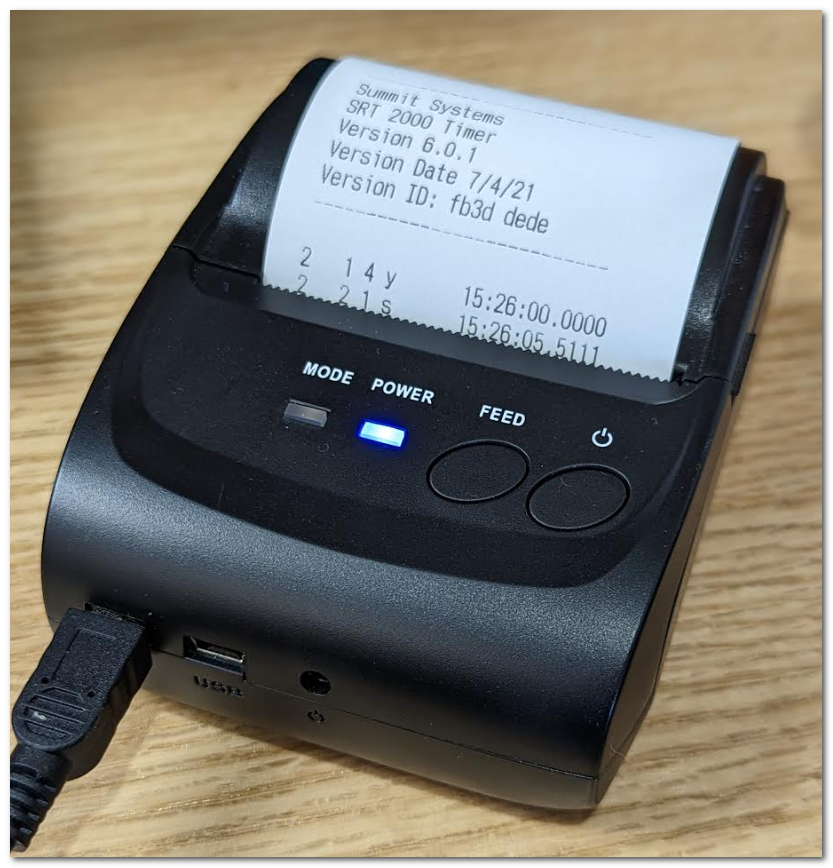
What are the best batteries to use with Summit Timers
Zone4 has done extensive testing of the new lithium rechargeable AA batteries and documented our findings here.
What about equipment rental?
Zone4 mission is to simplify timing and make it accessible to clubs. Equipment rental is a key mechanism to that. Zone4 will be increasing our rental stock of equipment to include the full line of Summit hardware to support the rental market. See our pricing page for more details as they become available.
Do I need a Server Box to use Summits with Zone4 Software
Although Server Boxes are a key component of offline timing and a using Summits, Zone4 is also working on a web based Summit bridge application that can connect to Summit timers/modem so that clubs who have good internet access on-site can use Summit Timers without needing a Server Box. The Summit Bridge feature collects times from the Summit timers and sends them online to the Zone4 timing application in the cloud. See here for more details.